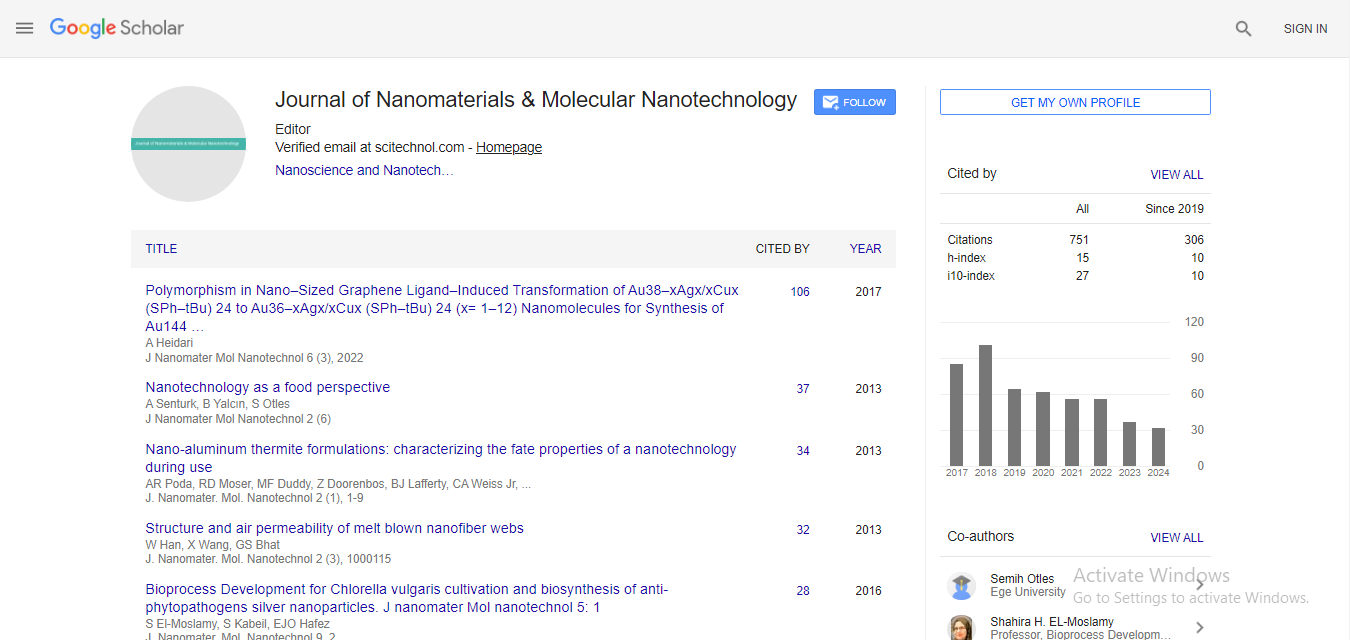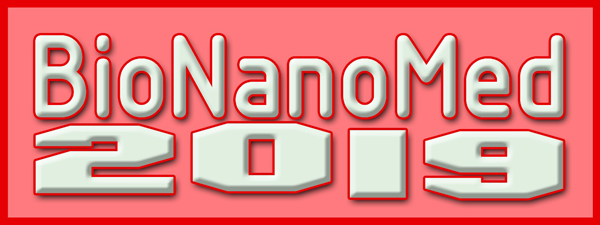Nano-structure chitosan-based hydrogels as drug delivery system
Elnaz Erfanian and Saba Vahdat Farimani
Amirkabir University of Technology, Iran
: J Nanomater Mol Nanotechnol
Abstract
Hydrogel nanoparticles called nano-gels show properties that each of the hydrogels and nanoparticles are individually present at the same time. Hence, water resistance, flexibility, versatility, high water absorption, biocompatibility and all the benefits of nanoparticles, especially long lifetimes in the used cycle, high aspect ratio and it is possible to use on the target site actively or inactively. Various methods have been used for the preparation of hydrogel nanoparticles, like emulsion polymerization, solvent evaporation, etc. Along with conventional synthetic polymers, extensive research has focused on the preparation of nanoparticles using natural hydrophilic polymers. In the following, hydrogel nanoparticles based on chitosan has been studied. Chitosan is a deacetylation form of chitin, a polysaccharide in crustacean crust. Chitosan is soluble in water and has a positive charge and it enables the polymer to be coated with negative charge polymers, macromolecules and even interact with some polyanions in an aqueous medium. These interactions and gel-soluble transition modes are used for nano capsulation purposes. Chitosan also has the ability to stick to the mucosal layers inside the body, which makes it important to consider mucus medications. Additionally, biocompatibility and low toxicity of chitosan make it useful for the transportation of macromolecules such as peptides, proteins, antigens, oligonucleotides and genes. Chitosan nanoparticles derived from the ionotropic coagulation of chitosan with tripolyphosphate are used to encapsulate the drug. For example, chitosan nanoparticles of 400-300 nm are used to deliver insulin. The kinetics of the drug release process in chitosan base hydrogel cannot be studied with the Fick equation due to large changes in the dimensions that occur during the release of the drug. Its kinetics in the second law indicates that the drug release process is unusual. However, its release is a linear function of the concentration of chitosan nanoparticles.
Biography
Elnaz Erfanian is currently pursuing her Master’s degree at Amirkabir University of Technology (Tehran Polytechnic), Polymer Engineering and Color Technology Department. Her research interest is in polymeric hydrogels and their applications.
E-mail: elnaz.erfanian@gmail.com
 Spanish
Spanish  Chinese
Chinese  Russian
Russian  German
German  French
French  Japanese
Japanese  Portuguese
Portuguese  Hindi
Hindi 



